Rudchester Mithraeum
The Rudchester Mithraeum was a Roman Temple to the god Mithras. In the late second or early third century AD, the Mithraeum stood approximately 12m x 6m about 137m South and West of the fort - about 200ft west of the spring. Nothing is visible of the Mithraeum now - the only stone structure visible in the field is clearly the "spring" marked on the maps. Additional information is available at: Heritage Gateway, Wikipedia, Tertullian and a video by Chris Huff dated 4 Jan 2023 on mithraeum.eu.
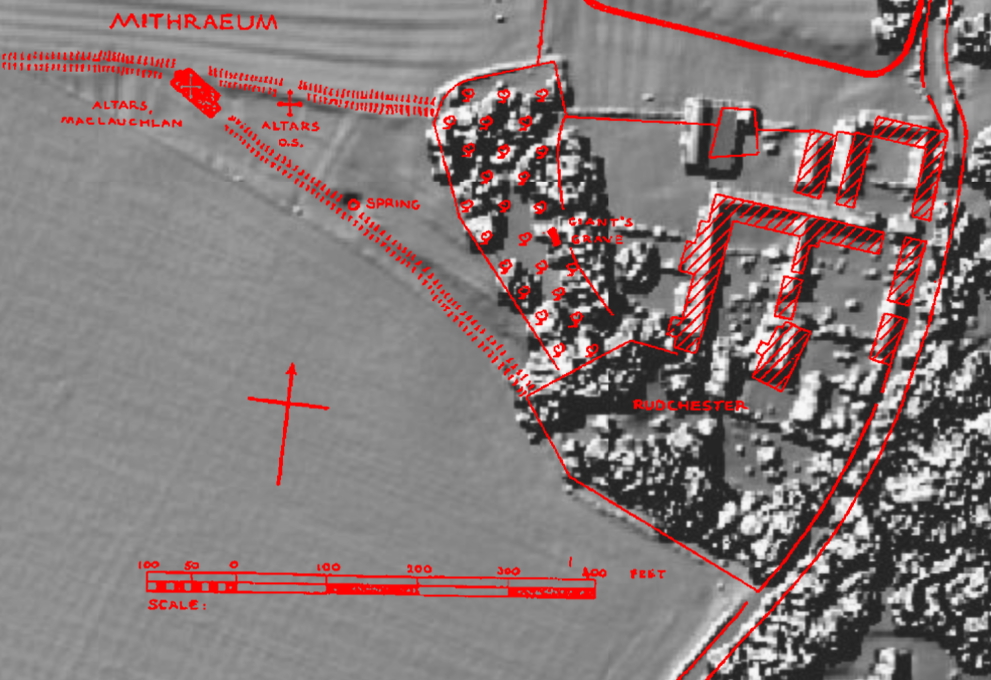
Mithraeum location
Click here for a high resolution photograph in a new window:
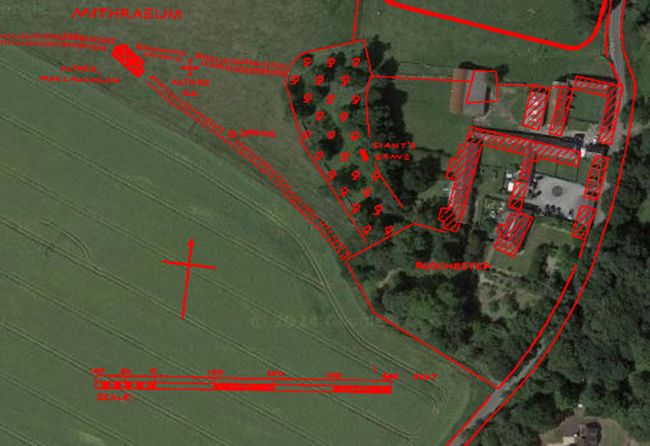
Mithraeum Location
Click here for a high resolution photograph in a new window:
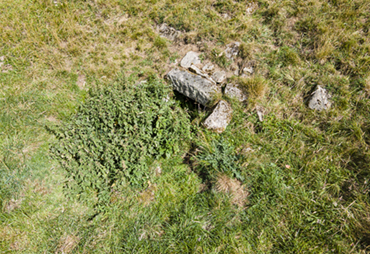
Spring
Click here for a high resolution photograph in a new window:
In August 1844, 5 altars were discovered by men "working stones out of a mound of earth about 200 yards west of [Mr Thomas James'] house (Rudchester Manor) (Archaeologia Aeliana Series 1 Volume 4, 1855, pp 5-14. John Bell and Thomas Hodgson). This must have been from the Mithraeum. The 3 "perfect" altars were moved by Mr James to Otterburn Castle on 14th December 1844, ;ater to the Black Gate and them the Museum of Antiquities. The 2 others were moved to the Antiquarian Society on 18th December 1944. All are now in the Great North Museum. These descriptions and translations are from Roman Inscriptions of Britain which is currently being re-launched as part of Latin Now at the University of Nottingham.
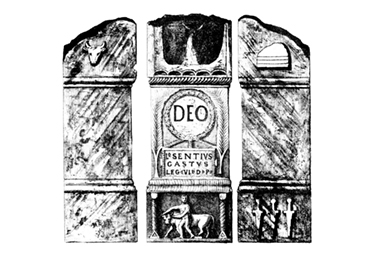
Altar 1
Click here for a high resolution photograph in a new window:
The carving represents Mithras with his bull.
More information available at Roman Inscriptions of Britian.
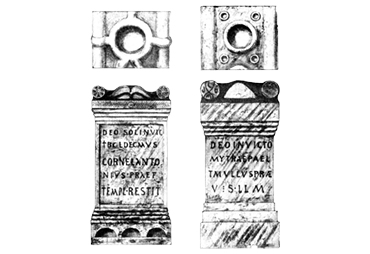
Altars 2 and 3
Click here for a high resolution photograph in a new window:
(tops shown above)
Deo Soli Invic(to) Tib(erius) Cl(audius) Dec(i)mus Cornel(ius) Antonius praef(ectus) templ(um) restit(uit) - To the Invincible Sun-god, Tiberius Claudius Decimus Cornelius Antonius, the prefect, restored this temple. RIB 1396
Deo Invicto Mytrae. P(ublius) Ael(ius) Titullus prae(fectus) v(otum) s(olvit) l(aetus) l(ibens) m(erito) - To the Invincible god Mithras, Publius Aelius Titullus, prefect, gladly, willingly, and deservedly fulfilled his vow. RIB 1395
More informationa available at Roman Inscriptions of Britian.
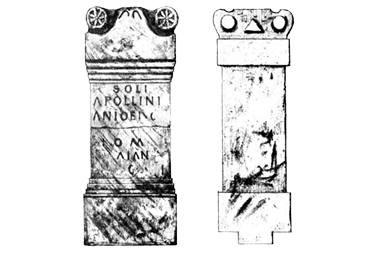
Altars 4 and 5
Click here for a high resolution photograph in a new window:
More information available at Roman Inscriptions of Britian.
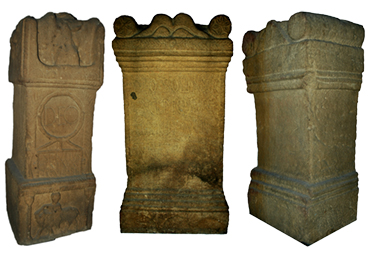
Altars 1, 2 & 3
Click here for a high resolution photograph in a new window:
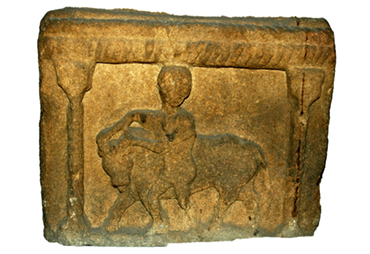
Mithras with his bull
Click here for a high resolution photograph in a new window:
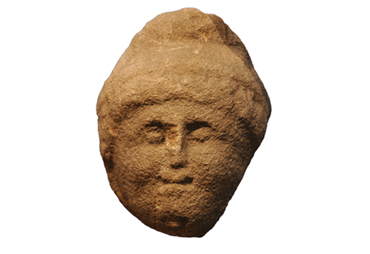
Cautes or Cautopates
Click here for a high resolution photograph in a new window:
The Mithraeum was excavated over 14 weeks from May to 28th August 1953 by J P Gillam and I MacIvor, using the maps from 1844. They wrote an excellent account woud multiple photograhs and drawings in Archaeologia Aeliana Series 4, Vol 32, pp. 176-219
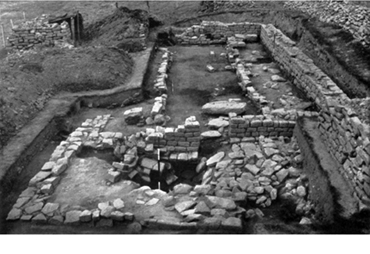
Photograph 1953
Click here for a high resolution photograph in a new window:
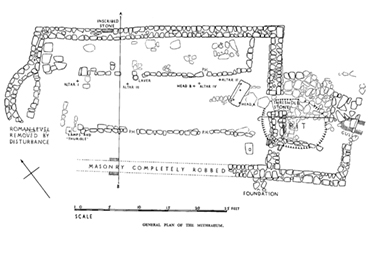
Mithraeum Excavation plan 1953
Click here for a high resolution photograph in a new window:
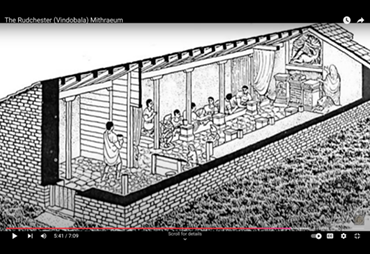
Mithraeum video guide 2023
Click here for a high resolution photograph in a new window:
The orientation of the temple is discussed in a paper by Amelia Carolina Sparavigna on the Social Science Research Network (PHILICA Article number 1109, 12th September 2017). Using software to demonstrate sunrise directions on satelite maps she demonstrates that noth Rudchester and Brocolita mithraea are orintated in the direction of sunrise on 25th December, the day celebrated as Mithras' birthday.
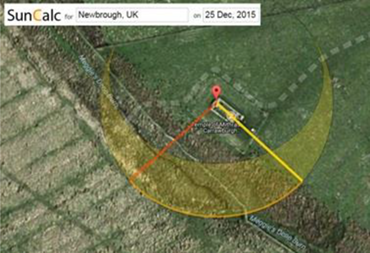
Figure 1
Click here for a high resolution photograph in a new window:
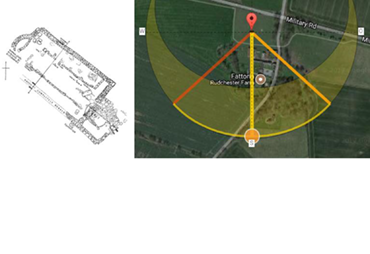
Figure 2
Click here for a high resolution photograph in a new window:
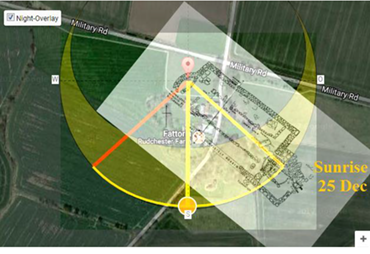
Figure 3
Click here for a high resolution photograph in a new window: